 Facebook
Facebook
 X
X
 Instagram
Instagram
 TikTok
TikTok
 Youtube
Youtube
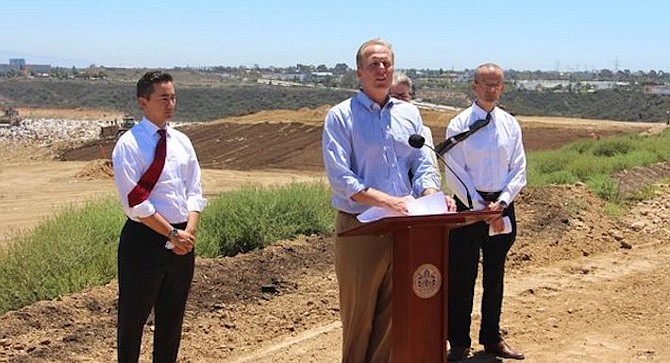
On May 25, the Air Pollution Control District hearing board ordered the city to return on July 27 with a diagnosis and a concrete plan to deal with the smells that are vexing residents downwind of Miramar Landfill. The city requested a 90-day continuance citing problems with discovery: not having all the documents they need from the district and having too many documents from the district.
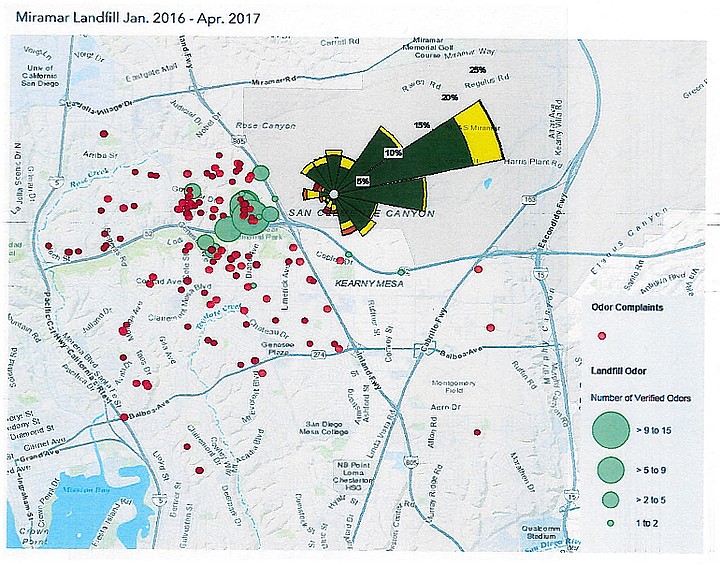
Before granting the continuance, the board gave the public a chance to speak. But not before the deputy city attorney and district staff had some choice words for each other over the requested continuance. One district staffer said the city's inability to prepare for the hearing was a problem of their own making.
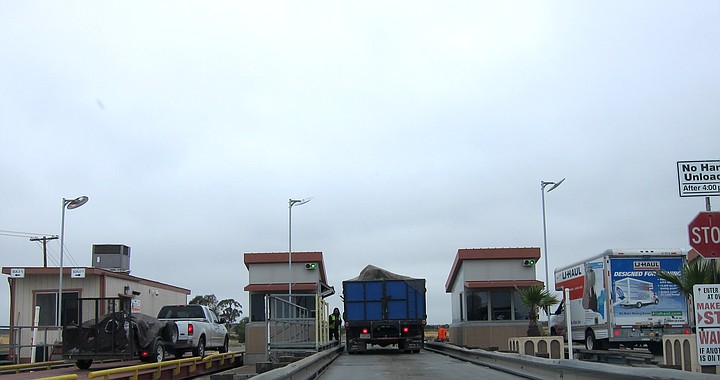
She said the city keeps asking for the same information and irrelevant information — and a lot of it. She pointed out that the city has known about the issue for more than year as the district has been working closely with them since January 2016.
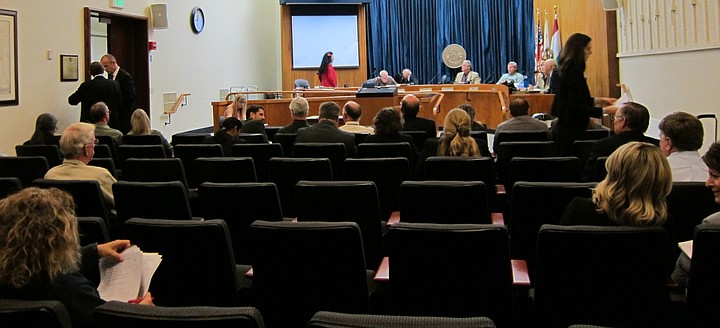
Another point of contention for the city is that it wants to cross-examine complainants even though they've been told by the district that their names will never be released. The district provided the city with a summary that has verbatim complaints sans the personal information. One district staffer said the city instead wants individual complaints that then needed to have personal information redacted.
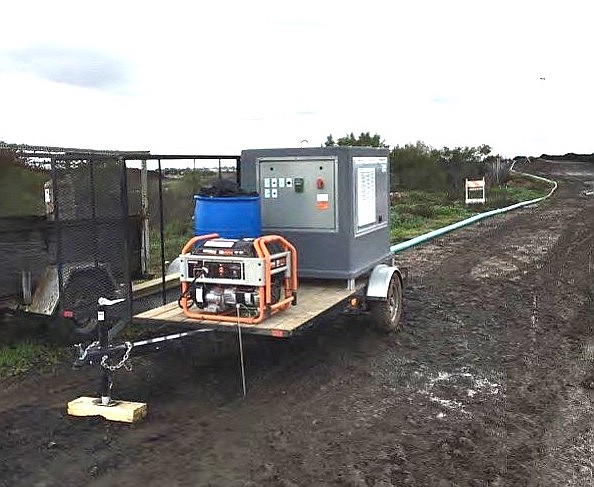
For residents of Clairemont and University City, this has been a hot topic for more than a year. Residents that have been living in their homes for decades started noticing a strong and funky smell about three years ago. Most couldn't pinpoint where it was coming from until they started to congregate on social media. Once a suspect was fingered, the complaints started pouring into the city and county in January 2016. This led to a March 2016 citation which led to a settlement in July 2016 — the city paid the county $15,000 with the condition of not having to admit liability.
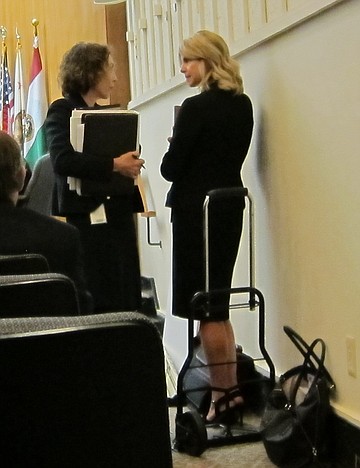
The district's May 1, 2017 complaint stated the city has "failed to modify the operation or operate in a manner to prevent the nuisance."
Part of the problem is out of the city's control as when the winds blow east to west during the early morning hours, November through April. This means that any landfill odor catching that wave ends up blowing downwind to University City and North Clairemont residents.
The district's position is the city needs some "legal encouragement" to head off better the putrid and pungent odors before the prevailing winds of November return. The district stated they weren't of the position that the city isn't trying; they just think they can do better.
One odd caveat is that even though composting has been identified as a potential source of the odor, the complaint stipulated that an abatement order wouldn't apply to any composting operations.
District staff pointed to more than 200 complaints and 60 investigations that documented more than 20 days of nuisance odors from the landfill that resulted in three violations being issued.
Before the public spoke, Bob Kard, air pollution control officer, emphasized that they're not asking the landfill to stop making odors — they're asking them to stop being a public nuisance. He said that improvements that should've been made haven’t and that best management practices aren't being used. He stated that if the hearing were allowed to proceed, the board would hear some surprising things.
Six public speakers had three minutes each to have their say. Five University City and Clairemont residents stated they had lived in their current homes anywhere between 6 to 40 years. They each stated they were hit with an overpowering and unpleasant smell about two to three years ago.
Jan Brown said the last three years have been trying. "It’s not just a smell, it’s thick like smoke at times." She asked, "What am I breathing? What am I smelling? I would like to know. I take that back, I demand to know what it is that I’m smelling."
Janis Deady cut her vacation short by four days to testify. Deady said the odors have been unbearable since around 2014. She said it never smelled before the city decided to extend the life of the landfill. In January 2015, Deady emailed every councilmember and the mayor. Councilmember Chris Cate told her to call her councilmember in District One. Deady replied, "Well, I’m sorry, but the landfill is in your district."
Samuel has lived in Clairemont since 1988. He said, "We get days that the stench is so bad that it burns your nose and eyes." He said he planted Jasmine to drown out the stench, but it only worked marginally.
Amy lives in University City but her daughter goes to school in North Clairemont, so she gets a double dose of the stench. "We aren't asking for any big changes. We're just asking for the [landfill] practices that were in place when we purchased our house to be returned to because they were effective."
When Matty first confronted the smell, he thought his sewer line had broken. About 1 1/2 years ago, he went online to find other people complaining about the same smell and where it came from (Miramar Landfill). He described the smell: "You know that odorant they put into natural gas? You mix that with vomit and dog poop — that’s what it smells like."
The last speaker from a disposal association talked up the landfill and how the city has a "clear strategy" to control odors. As he walked away, a board member asked how long he'd lived in the area. His response was that he didn't. That got a laugh.
Board member Edward Gabrielson commented that the landfill has been around for about 40 years, but complaints were minimal before. Another board member pointedly asked what changed at the landfill three years ago.
I waded through state and city documentation for some clues. The state has hundreds of inspection reports, violations, correspondence, and other documentation going back to 1990 for Miramar Landfill. Violations in 1995 included some of the same issues still getting violations more than 20 years later.
Besides documents showing repeated waste and landfill gas violations and concerns, one inspection report dated November 21, 2014 stated that "a new pancake lift started today." This is something Mayor Faulconer spoke of in 2015 when he announced Miramar Landfill would stay open until 2030 (originally to close circa 2012). Formerly, the city compacted trash on hill slopes. The "pancake lift" was touted as allowing 45 percent more trash to fit into the same space. This method uses a trash compactor to squish waste flat like a pancake so it can be stacked atop yesterday's trashy pancake. More trash means more money too — about $100 million extra is estimated before 2030.
This same report pointed to a 2013 report that called out the landfill for recent operational changes involving personnel requirements, supervisory structure, spreading and compaction, equipment, and waste handling.
Inspection photos over the years showed consistent problems with ripped tarps and exposed waste which means that is nothing new.
More recently on May 9, eight days after the district's complaint was signed, inspection photos show damaged tarps and exposed waste and deterioration of landfill gas extraction equipment. The latter is a big deal that can lead to pungent odors and be dangerous.
The city said they've been investigating different odor technologies the past 16 months. On top of that, they've been shelling out more money to extend the life of the landfill. On June 6, the city council voted to add more than $100,000 to contracts with two consultants toward that end.
The mayor has a lot riding on the landfill staying open. As reported in January, the city decided to siphon off millions from the Miramar Landfill closure fund to finance the city's zero-waste goal.
No one at the hearing suggested the landfill close. One board member commented that finding a new location would be a nightmare.
One Clairemont resident that didn't wish to be named said, "The mayor's goals are noble. However, if I have to breathe that toxic sludge for another year, I'm going to lose it."


On May 25, the Air Pollution Control District hearing board ordered the city to return on July 27 with a diagnosis and a concrete plan to deal with the smells that are vexing residents downwind of Miramar Landfill. The city requested a 90-day continuance citing problems with discovery: not having all the documents they need from the district and having too many documents from the district.

Before granting the continuance, the board gave the public a chance to speak. But not before the deputy city attorney and district staff had some choice words for each other over the requested continuance. One district staffer said the city's inability to prepare for the hearing was a problem of their own making.

She said the city keeps asking for the same information and irrelevant information — and a lot of it. She pointed out that the city has known about the issue for more than year as the district has been working closely with them since January 2016.

Another point of contention for the city is that it wants to cross-examine complainants even though they've been told by the district that their names will never be released. The district provided the city with a summary that has verbatim complaints sans the personal information. One district staffer said the city instead wants individual complaints that then needed to have personal information redacted.

For residents of Clairemont and University City, this has been a hot topic for more than a year. Residents that have been living in their homes for decades started noticing a strong and funky smell about three years ago. Most couldn't pinpoint where it was coming from until they started to congregate on social media. Once a suspect was fingered, the complaints started pouring into the city and county in January 2016. This led to a March 2016 citation which led to a settlement in July 2016 — the city paid the county $15,000 with the condition of not having to admit liability.

The district's May 1, 2017 complaint stated the city has "failed to modify the operation or operate in a manner to prevent the nuisance."
Part of the problem is out of the city's control as when the winds blow east to west during the early morning hours, November through April. This means that any landfill odor catching that wave ends up blowing downwind to University City and North Clairemont residents.
The district's position is the city needs some "legal encouragement" to head off better the putrid and pungent odors before the prevailing winds of November return. The district stated they weren't of the position that the city isn't trying; they just think they can do better.
One odd caveat is that even though composting has been identified as a potential source of the odor, the complaint stipulated that an abatement order wouldn't apply to any composting operations.
District staff pointed to more than 200 complaints and 60 investigations that documented more than 20 days of nuisance odors from the landfill that resulted in three violations being issued.
Before the public spoke, Bob Kard, air pollution control officer, emphasized that they're not asking the landfill to stop making odors — they're asking them to stop being a public nuisance. He said that improvements that should've been made haven’t and that best management practices aren't being used. He stated that if the hearing were allowed to proceed, the board would hear some surprising things.
Six public speakers had three minutes each to have their say. Five University City and Clairemont residents stated they had lived in their current homes anywhere between 6 to 40 years. They each stated they were hit with an overpowering and unpleasant smell about two to three years ago.
Jan Brown said the last three years have been trying. "It’s not just a smell, it’s thick like smoke at times." She asked, "What am I breathing? What am I smelling? I would like to know. I take that back, I demand to know what it is that I’m smelling."
Janis Deady cut her vacation short by four days to testify. Deady said the odors have been unbearable since around 2014. She said it never smelled before the city decided to extend the life of the landfill. In January 2015, Deady emailed every councilmember and the mayor. Councilmember Chris Cate told her to call her councilmember in District One. Deady replied, "Well, I’m sorry, but the landfill is in your district."
Samuel has lived in Clairemont since 1988. He said, "We get days that the stench is so bad that it burns your nose and eyes." He said he planted Jasmine to drown out the stench, but it only worked marginally.
Amy lives in University City but her daughter goes to school in North Clairemont, so she gets a double dose of the stench. "We aren't asking for any big changes. We're just asking for the [landfill] practices that were in place when we purchased our house to be returned to because they were effective."
When Matty first confronted the smell, he thought his sewer line had broken. About 1 1/2 years ago, he went online to find other people complaining about the same smell and where it came from (Miramar Landfill). He described the smell: "You know that odorant they put into natural gas? You mix that with vomit and dog poop — that’s what it smells like."
The last speaker from a disposal association talked up the landfill and how the city has a "clear strategy" to control odors. As he walked away, a board member asked how long he'd lived in the area. His response was that he didn't. That got a laugh.
Board member Edward Gabrielson commented that the landfill has been around for about 40 years, but complaints were minimal before. Another board member pointedly asked what changed at the landfill three years ago.
I waded through state and city documentation for some clues. The state has hundreds of inspection reports, violations, correspondence, and other documentation going back to 1990 for Miramar Landfill. Violations in 1995 included some of the same issues still getting violations more than 20 years later.
Besides documents showing repeated waste and landfill gas violations and concerns, one inspection report dated November 21, 2014 stated that "a new pancake lift started today." This is something Mayor Faulconer spoke of in 2015 when he announced Miramar Landfill would stay open until 2030 (originally to close circa 2012). Formerly, the city compacted trash on hill slopes. The "pancake lift" was touted as allowing 45 percent more trash to fit into the same space. This method uses a trash compactor to squish waste flat like a pancake so it can be stacked atop yesterday's trashy pancake. More trash means more money too — about $100 million extra is estimated before 2030.
This same report pointed to a 2013 report that called out the landfill for recent operational changes involving personnel requirements, supervisory structure, spreading and compaction, equipment, and waste handling.
Inspection photos over the years showed consistent problems with ripped tarps and exposed waste which means that is nothing new.
More recently on May 9, eight days after the district's complaint was signed, inspection photos show damaged tarps and exposed waste and deterioration of landfill gas extraction equipment. The latter is a big deal that can lead to pungent odors and be dangerous.
The city said they've been investigating different odor technologies the past 16 months. On top of that, they've been shelling out more money to extend the life of the landfill. On June 6, the city council voted to add more than $100,000 to contracts with two consultants toward that end.
The mayor has a lot riding on the landfill staying open. As reported in January, the city decided to siphon off millions from the Miramar Landfill closure fund to finance the city's zero-waste goal.
No one at the hearing suggested the landfill close. One board member commented that finding a new location would be a nightmare.
One Clairemont resident that didn't wish to be named said, "The mayor's goals are noble. However, if I have to breathe that toxic sludge for another year, I'm going to lose it."
Comments